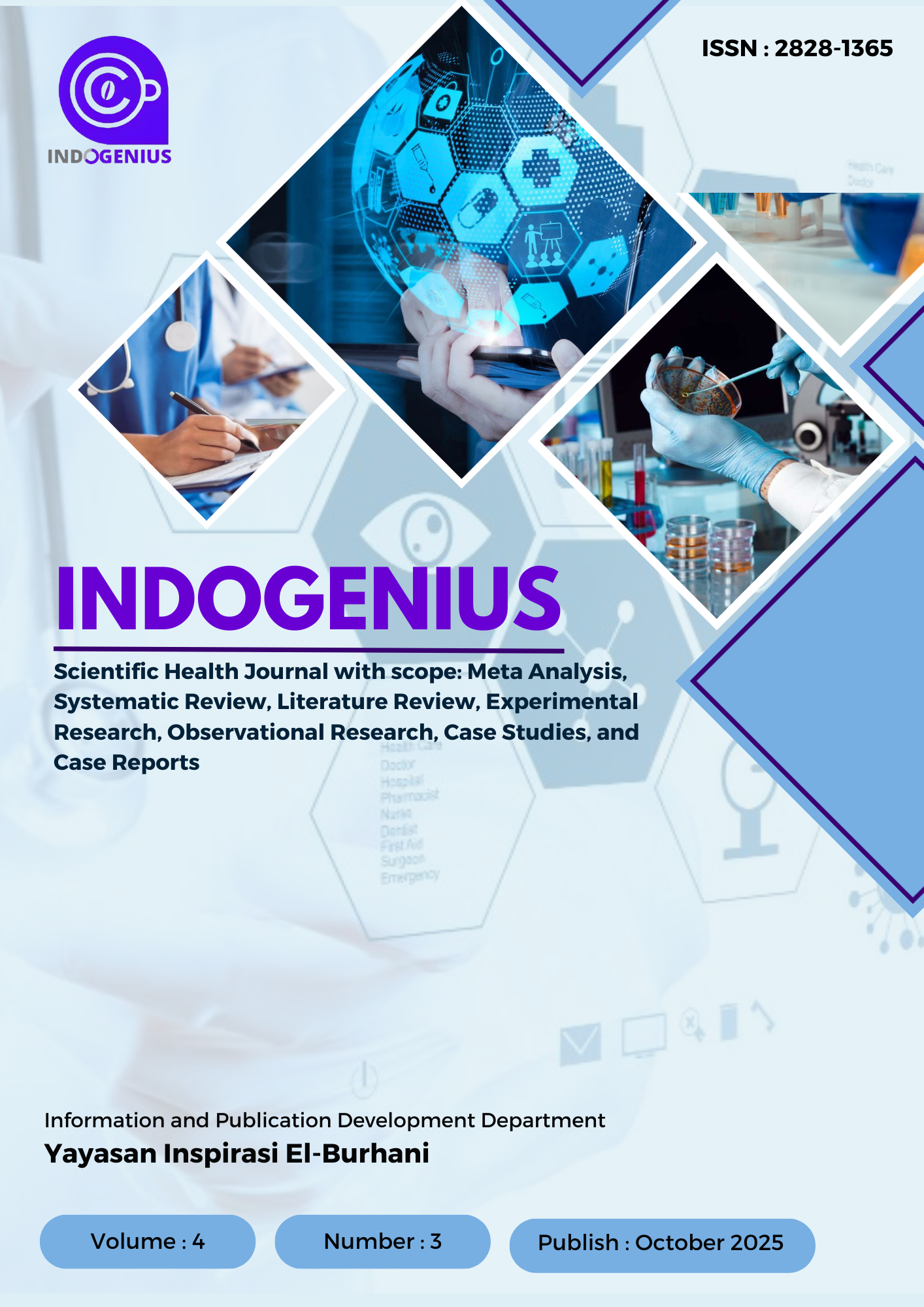Identification of Fungi on the Scalp of Male Santri Wearing Peci at the AI Islah Islamic Boarding School, Kebagusan, Ampelgading, Pemalang
DOI:
https://doi.org/10.56359/igj.v4i3.660Keywords:
Fungal Infection, Santri, Peci, Aspergillus sp., Tinea capitis, Personal HygieneAbstract
Background & Objective: Fungal infections of the scalp, particularly tinea capitis, are a common health problem in environments with poor hygiene, such as Islamic boarding schools (pondok pesantren). This study aims to identify the types of fungi infecting the scalps of male santri who regularly wear the peci (a traditional cap) at the Al-Ikhlas Islamic Boarding School in Kebagusan, Ampelgading, Pemalang.
Method: The study used a descriptive method with a laboratory approach, involving culture on Sabouraud Dextrose Agar (SDA) medium and microscopic examination for fungal identification.
Result: Out of 20 scalp scraping samples analyzed, 75% showed positive results for fungal infection. The most dominant fungus found was Aspergillus sp., while Candida sp. was found in only one sample (5%). No infections by Trichophyton or Microsporum were detected. Questionnaire results supported the laboratory findings, indicating that only 10.8% of santri regularly shampooed their hair, 13.5% washed their peci periodically, and 35.1% reported symptoms of scalp itching.
Conclusion: This study demonstrates that the habit of wearing the peci without proper hygiene maintenance can be a significant risk factor for scalp fungal infections. Therefore, preventive efforts through personal hygiene education and routine examinations are needed to reduce the incidence of fungal infections in the pesantren environment.
Downloads
References
Afandi Putra Yuda, & Seftiwan Pratami Djasfar. (2023). Identifikasi Jamur Pityrosporum Ovale Penyebab Penyakit Pityriasis Capitis Pada Pasukan Pengibar Bendera (Paskibra) SMA “X” Kota Tangerang. Jurnal Ventilator, 1(3), 294–301. https://doi.org/10.59680/ventilator.v1i3.780
Ariyadi, R., Ruhimat, U., Gantina, H. T. S., & Firdaus, N. R. (2024). Identifikasi Nematoda Usus Pada Balita Stunting di Wilayah Kerja Puskesmas Baregbeg. INDOGENIUS, 3(3), 177-181.
Awaluddin, Waji, R. A., & Debit, Y. (2022). Identification of Dermatophyte Causes Tinea Capitis in Users of Hair Oil Made From WAX in Manggala District, Makassar. Jurnal Kedokteran Universitas Palangka Raya, 10(1), 28–32. https://doi.org/10.37304/jkupr.v10i1.4232
Ulum, M., Lukman, N., Armiyanti, Y., & Agustina, D. (2018). The Correlation of Risk Factors to the incidence of Pediculosis capitis on Students in Pondok Pesantren Miftahul Ulum, Jember. Dalam Journal of Agromedicine and Medical Sciences (Vol. 4, Nomor 2).
Kertamukti, R. (2013). KOMUNIKASI SIMBOL : PECI DAN PANCASILA.
Noviannisa, F. A., Astari, L., & Alimsardjono, L. (2022). Clinical and Cure Profile of Tinea Capitis Patients. https://e-journal.unair.ac.id/BIKK
Putri, A., Natalia, D., & Fitriangga, A. (2020). HUBUNGAN PERSONAL HYGIENE TERHADAP KEJADIAN Pityriasis capitis PADA SISWI DI SMK NEGERI 1 MEMPAWAH HILIR The Relationship Of Personal Hygiene With The Incidence Of Pityriasis Capitis Among Female Student Of Vocational and Pre-Professional High School 1 Mempawah Hilir (Vol. 2).
Ruhimat, U., Mutmainah, R. N., Ramdan, S. R. K., & Firdaus, N. R. (2024). Utilization of Purple Sweet Potato Juice As an Alternative Violet Crystal in Coloring Streptococcus sp Bacteria and Escherichia coli. JURNAL KESEHATAN STIKes MUHAMMADIYAH CIAMIS, 11(2), 149-156.
Siregar, N., & Pertiwi, F. (2021). Profil Tinea Kapitis Di Poli Kesehatan Kulit Dan Kelamin RSUD Deli Serdang Lubuk Pakam Pada Tahun 2014-2017.
Wahyuningsih, R., Adawiyah, R., Sjam, R., Prihartono, J., Ayu Tri Wulandari, E., Rozaliyani, A., Ronny, R., Imran, D., Tugiran, M., Siagian, F. E., & Denning, D. W. (2021). Serious fungal disease incidence and prevalence in Indonesia. Mycoses, 64(10), 1203–1212. https://doi.org/10.1111/myc.13304
Downloads
Published
How to Cite
Issue
Section
License
Copyright (c) 2025 Helmi Aji Pratama, Tuti Suparyati

This work is licensed under a Creative Commons Attribution 4.0 International License.

















